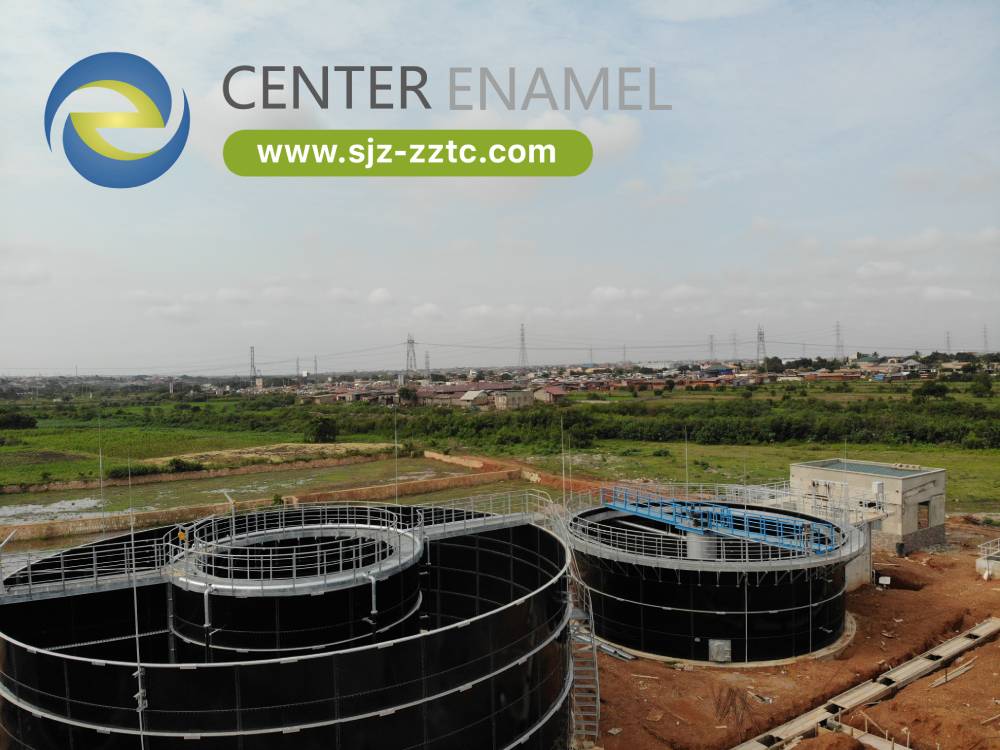Safe CSTR Reactor Applications for Anaerobic Digestion of Crop Straw Residue
Shijiazhuang Zhengzhong Technology Co., Ltd. (Center Enamel) is a global leader in the design and manufacture of storage tanks and wastewater treatment systems. With over three decades of experience, Center Enamel has built a strong reputation for delivering high-performance, safe, and reliable anaerobic digestion solutions. Among its most innovative offerings is the Continuous Stirred-Tank Reactor (CSTR), a core technology for processing organic waste, such as crop straw residue, through anaerobic digestion. This technology has gained significant relevance in the chemical and agricultural sectors, offering sustainable energy recovery, efficient waste reduction, and environmental protection.
CSTR reactors play a crucial role in transforming agricultural waste—particularly crop straw, a common residue in farming—into valuable biogas. The digestion of crop straw presents technical challenges due to its fibrous and lignocellulosic nature, but CSTR reactors offer a viable and secure platform for handling this biomass. When designed and operated safely, these reactors provide long-term, stable solutions for countries seeking to enhance their agricultural waste management and energy independence.

Advantages of CSTR Reactors in the Anaerobic Digestion of Crop Straw
CSTR reactors are recognized for their operational efficiency and safety in treating various organic waste, including crop residues. Their benefits in this context include:
Effective Mixing and Homogeneity
The stirred-tank design ensures continuous agitation of the biomass, promoting even distribution of temperature and substrates.
Uniform mixing improves the contact between microorganisms and crop straw particles, enhancing digestion efficiency.
High Methane Yield from Lignocellulosic Biomass
Despite the structural complexity of crop straw, the controlled environment in CSTRs facilitates pre-treatment and microbial breakdown.
This maximizes biogas production, transforming what is often considered agricultural waste into a renewable energy source.
Safe and Stable Operation
CSTR reactors operate under controlled conditions with robust temperature regulation, gas pressure monitoring, and emergency safety systems.
They are designed to prevent gas leakage, overpressure, and system failure, ensuring operational safety.
Compatibility with Pretreatment Systems
Crop straw often requires pretreatment, such as shredding, steam explosion, or enzymatic hydrolysis. CSTR reactors integrate well with these systems to ensure the complete breakdown of cellulose and hemicellulose.
Durable Construction Materials
When combined with epoxy-coated or glass-fused-to-steel tanks, the reactors offer long-lasting resistance to chemical corrosion and mechanical wear, ensuring decades of reliable use.
Importance of CSTR Applications in the Agricultural Sector
Crop straw is one of the most abundant agricultural residues globally. Traditionally, large volumes of straw are either burned—contributing to severe air pollution—or left to decompose, releasing methane into the atmosphere without energy recovery. With the global emphasis shifting toward environmental sustainability and circular economies, the safe and efficient conversion of crop straw into biogas via anaerobic digestion has gained strategic importance.
Environmental Impact Mitigation
Converting straw into biogas through CSTR reactors prevents open-field burning, which releases harmful particulates and greenhouse gases.
Controlled digestion reduces uncontrolled methane emissions and converts waste into eco-friendly energy.
Renewable Energy Generation
With increasing demand for renewable energy, biogas from straw offers an untapped and sustainable resource.
CSTR systems help rural and farming communities become energy self-sufficient by producing fuel for cooking, heating, and electricity.
Waste Management and Soil Fertility
Post-digestion slurry can be used as organic fertilizer, returning valuable nutrients to the soil.
This closes the agricultural loop and reduces reliance on chemical fertilizers.
Alignment with National Sustainability Goals
Many countries are prioritizing clean energy and sustainable agriculture in their national policies.
Key Factors to Consider When Applying CSTR Reactors for Crop Straw Digestion
To ensure the safe and effective operation of CSTR systems in treating crop straw, several critical design and operational considerations must be addressed:
Temperature Management
The anaerobic digestion of straw is most effective under mesophilic or thermophilic conditions.
Maintaining stable temperatures is crucial. CSTR reactors are equipped with automated heating systems and insulation to ensure temperature control.
Feeding and Mixing Systems
Feeding systems must accommodate fibrous materials and prevent clogging.
Center Enamel utilizes specially designed mixers to handle high-fiber content while avoiding dead zones inside the reactor.
Safety Features
Biogas systems must be sealed, pressure-regulated, and explosion-proof.
Center Enamel implements comprehensive safety protocols including gas flares, pressure relief valves, and monitoring sensors to protect operators and the environment.
Regulatory Compliance and Monitoring
Adherence to local environmental standards and waste management regulations is vital.
Center Enamel supports its clients in system documentation, commissioning, and compliance with relevant laws and standards.
Why Choose Center Enamel for Safe and Efficient CSTR Reactor Systems
With an extensive portfolio of successful anaerobic digestion projects around the globe, Center Enamel is the partner of choice for safe, efficient, and long-lasting CSTR reactor systems.
Technical Excellence
Center Enamel’s engineering team includes top experts in anaerobic digestion, tank manufacturing, and chemical process design.
The company utilizes advanced 3D modeling, CFD simulation, and smart control systems to optimize each project.
High-Quality Tank Materials
The reactors are paired with world-class tank materials such as epoxy resin and glass-fused-to-steel, offering unmatched corrosion resistance and hygiene.
These tanks ensure longevity, reduced maintenance, and a low total cost of ownership.
Comprehensive Turnkey Solutions
From system design and equipment supply to installation and commissioning, Center Enamel provides full-service project management.
Clients benefit from single-source accountability and smooth coordination across every phase.
Global Project Experience
With projects in over 80 countries, Center Enamel understands the unique regulatory, climatic, and logistical challenges of diverse regions.
The company tailors solutions to meet local environmental standards, energy demands, and infrastructure needs.
Sustainability and Innovation Focus
Committed to sustainability, Center Enamel invests heavily in R&D to improve reactor performance and safety.
Its solutions align with global efforts to combat climate change and promote the use of renewable energy.
Ongoing Technical Support
Center Enamel provides operator training, maintenance services, and remote monitoring to ensure system reliability and efficiency over the long term.
By integrating safety, efficiency, and adaptability, Center Enamel’s CSTR reactors offer a groundbreaking solution for the anaerobic digestion of crop straw residue. Through advanced engineering and commitment to environmental sustainability, these systems enable agricultural sectors to transform waste into clean energy—safely and reliably.
